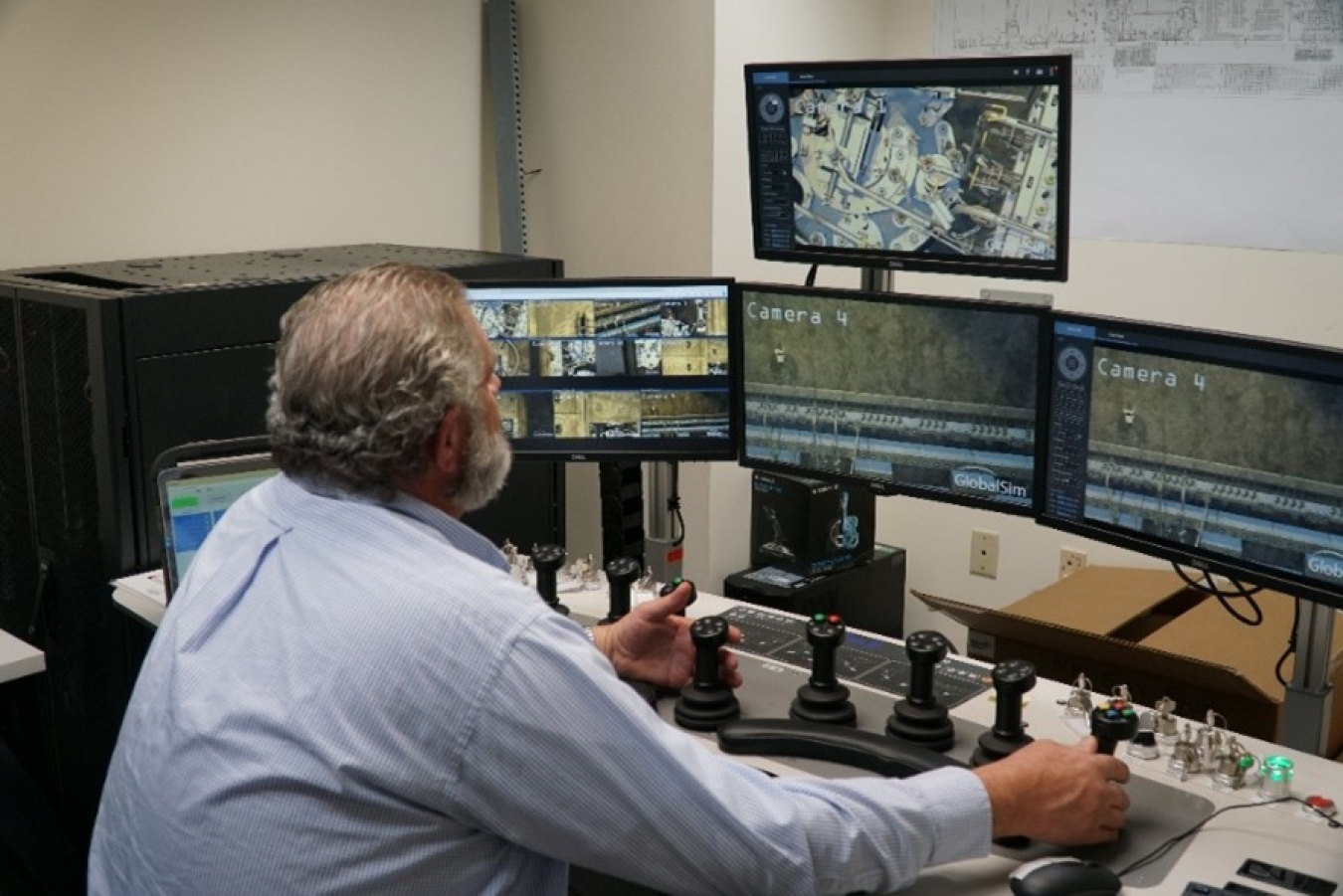A new simulator will help train operators on the safe and efficient movement of a crane at the Defense Waste Processing Facility at the Savannah River Site.
Office of Environmental Management
May 13, 2025Savannah River Site liquid waste contractor Savannah River Mission Completion has deployed simulator technology to train crane operators for the Defense Waste Processing Facility. The new simulator provides a 3D representation of the facility’s canyon area. Simulator Instructor Marc Widener, pictured, said the simulator can adjust parameters within the program to fine-tune the new operators’ capabilities.
AIKEN, S.C. — A new simulator will help train operators on the safe and efficient movement of a crane at the Defense Waste Processing Facility (DWPF) at the Savannah River Site (SRS).
Since DWPF began its U.S. Department of Energy (DOE) Office of Environmental Management mission of dispositioning highly radioactive liquid waste in 1996, crane operators learned their skills through on-the-job training. However, the Main Processing Cell (MPC) crane, which they will use following simulator training, is extremely important to the overall work performed inside the DWPF canyon where processing occurs. The processing area of the facility is referred to as a canyon because it resembles a deep valley with steep, vertical walls.
The MPC crane carries several tools, including hoists designed for lifting items weighing from 1 ton to 117 tons. Eleven cameras mounted to the crane frame allow the operator to position the crane and its hoists wherever needed over the canyon. Another camera is used to get close-up views of anything in the canyon.
Manipulating a powerful crane by way of a video screen through the facility’s canyon full of equipment proved challenging for new hires. With the site’s aging workforce and the need to train a new generation of operators, finding a worthy training device became a necessity.
Liquid waste contractor Savannah River Mission Completion (SRMC) identified an appropriate simulator in 2022 that would be so realistic, trainees could be thoroughly trained on everyday duties as well as unusual events in a comparably short time. The simulator uses the same type of crane operator console coupled with a simulation model that uses high resolution imaging and physics-based video game technology. MPC Simulator Instructor Marc Widener believes this new video instructional tool will prove to be invaluable over time.
“We can create personalized scenarios for crane operators to help them hone their skills,” Widener said. “We can develop scenarios specifically designed to help them in problem areas they personally experience, instead of a blanketed approach to cover everyone. This simulator enables us to adjust parameters within the program to fine-tune movements and tune their capabilities.”
SRMC Chief Operations Officer Wyatt Clark believes the simulator will help prepare crane operators for major tasks that lie ahead.
“In the future, we have plans to replace the melter, which is a DWPF process vessel that heats a mixture of molten glass and concentrated high-activity radioactive waste at 2,100 degrees Fahrenheit,” Clark said. “This is no small task, and it is certain to present numerous challenges to operators who have never performed this work before. With this simulator, we believe we can train our operators to prepare to overcome many of these challenges.”
Tony Robinson, DOE-Savannah River acting assistant manager for waste disposition, said the simulator could help new operators better understand and manage the unexpected.
“The safety of the SRS workforce is dependent upon good training and the ability to perform our jobs well and efficiently,” Robinson said. “By employing new technologies like this simulator, it is likely that operators will be better prepared to recognize and respond to challenges they might face. This preparation helps our workforce perform better and with more confidence.”
-Contributor: Jim Beasley
To receive the latest news and updates about the Office of Environmental Management, submit your e-mail address.


